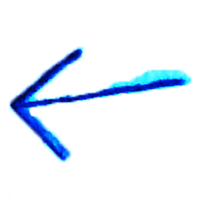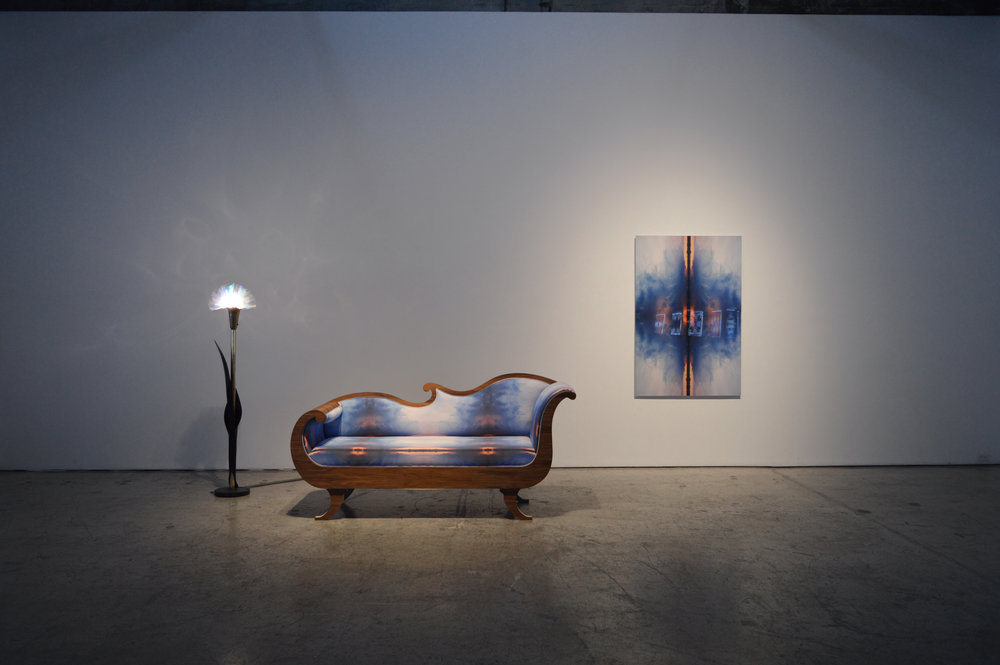
As the Ciber Lab developed its method for the production of NanoMedia, it aimed to show that its technique could produce highly defined bright and crisp images. For example, inkjet printing on the RGB nanosubstrate with molded (embedded or injected) silver ink makes possible any of 9,261 different colours for each pixel [C7; J3]. Moreover, the process of making NanoMedia also allowed for the production of larger nano-optical images than had previously been possible. Thus, the objective in these tests was to produce NanoMedia versions of recognizable images such as of famous paintings (Fig. 1) which helped verify the accuracy of colour reproduction, as well as to produce images that were very colourful and complex to test for precision (Fig 2). These tests also helped fine-tune myriad scientific choices in terms of materials and processes.
The first test that brought an artist into the fold was the production of an insert with Christine Davis for the Canadian arts periodical PUBLIC: Art/Culture/Ideas. The initial goal was to produce the cover of the 50th issue, on the theme of The Retreat. Since the journal prints 1,000 copies of each issue, this meant that what we were embarking on what was not only an aesthetic exploration of new visual fabrics, but also a considerable (considering the university setting) scaling-up enterprise of a still-embryonic, even artisanal, technique. Davis designed the image of the cover as a somber forest, with nano-optical stars iridescing from the dark (Fig.1). Jiang converted her digital files for the stars using in-house software to produce a photomask that would create the equivalent colors on the nanosubstrate. Along the way, a number of choices had to be made: choices over exact processes and assembly, materials, coating, lamination, etc. With a tight schedule the plans for a cover eventually shifted to the production of an insert to limit some of the challenges of integrating the nano-optical substrate with the printing of the journal itself. Scott Lyall joined along the way, making this project the first that brought the entire team together. It was the moment where a series of questions emerged that would animate the conversations between the researchers: questions on method, on how to measure success, on how artworks work with emerging technologies, and on the very different questions that animate the logic from the lab to the studio.
The PUBLIC project was in part driven by the idea of having nano-optical images circulate in ways untied to their function as authentication/security devices. This desire lead us to the making of copies, in order to showcase the prototypical (even accessible) possibilities of the methods developed by the Lab. If a technological prototype is defined as that which is the original to be copied, it indicates the moment of reproducibility that shifts visual technologies from the singular specimen to the circulated image and the possibilities of “scaling-up.” In this the prototype is distinct from simulations, proofs-of-concept, samples, conceptual models, or even experimental artifacts, none which are innately bound to questions of reproducibility.
The way that Davis and Lyall chose to work with the nano-optical foil was also significant in that they chose to create a material link between the nano scale with the expansive scales of star light. Their specs of colour are not “images,” they do not display the high-definition capabilities of the Ciber Lab; rather, they draw our attention to the potential of the foil as an interface for light, a study in how perception and movement meet the physical structures of matter and light to make colour possible.
Adapted from Aleksandra Kaminska (2014, 2018). Jump to references.


Scott continued his investigation of NanoMedia by integrating it into a career preoccupied with light, its materiality, fleetingness, and programmability. Here his process began by producing digital images which would then be translated and transformed into the physical structures of the nano-optical foil.
“The sources of the images are renderings of the Cosmos, or digital visualizations of societies of stars. Because these renderings appear photographically, at rates of definition well below those of NanoMedia, which uses a scale of many billions of pixels, algorithmic functions are used to multiply the lodes of information embedded in the foils. This results in real-time explosions of the stars and delivers the final works to an imaginative figuring, or to a hallucinatory poetics of the scientific Real. Colors explode as unique performances every time these works are in aspect with our eye. Passing through the retina into mental images, they provoke a fleeting drama of the deaths of tiny stars. Supernovas sparkle as a cognitive material we experience as feeling, conscious imaginary, and thought.” – via Miguel Abreu Gallery
Hi. I'm popup. I contain additionnal information about this.
Hi. I'm popup. I contain additionnal information about this.
Hello. Welcome into Project Nanoverse. Nice to meet you!